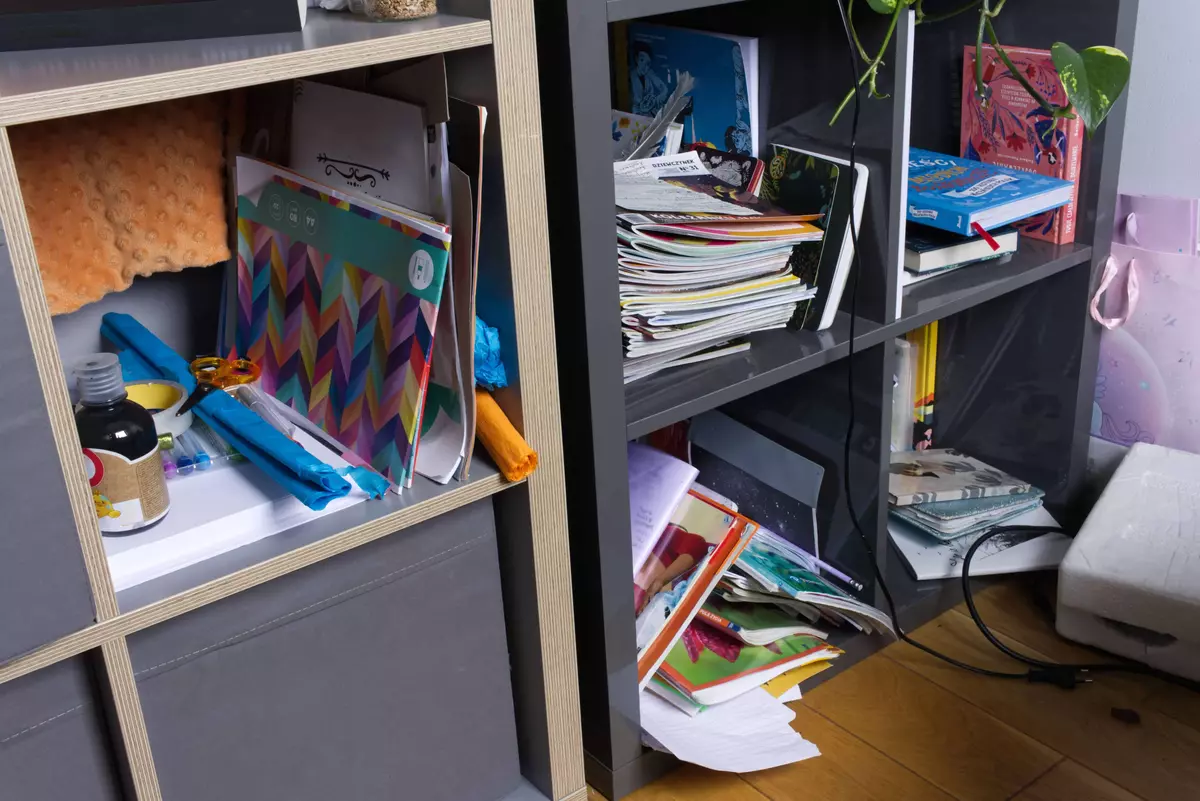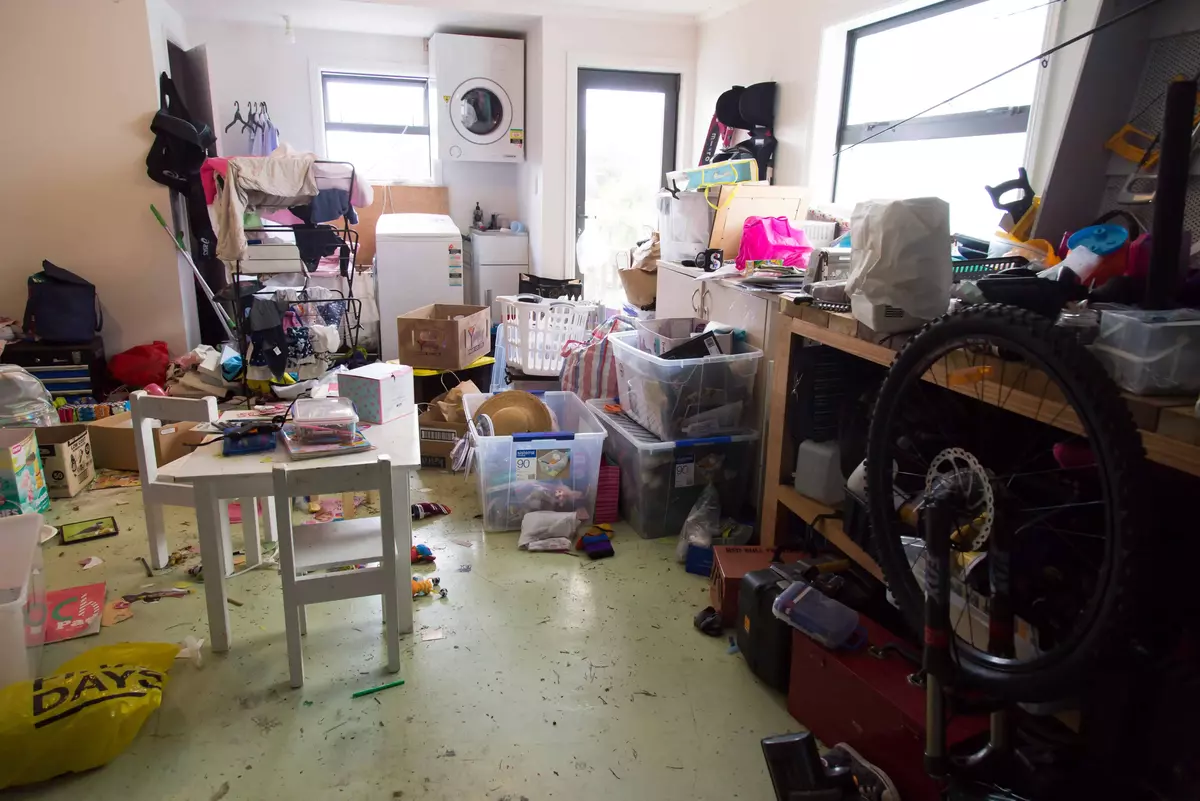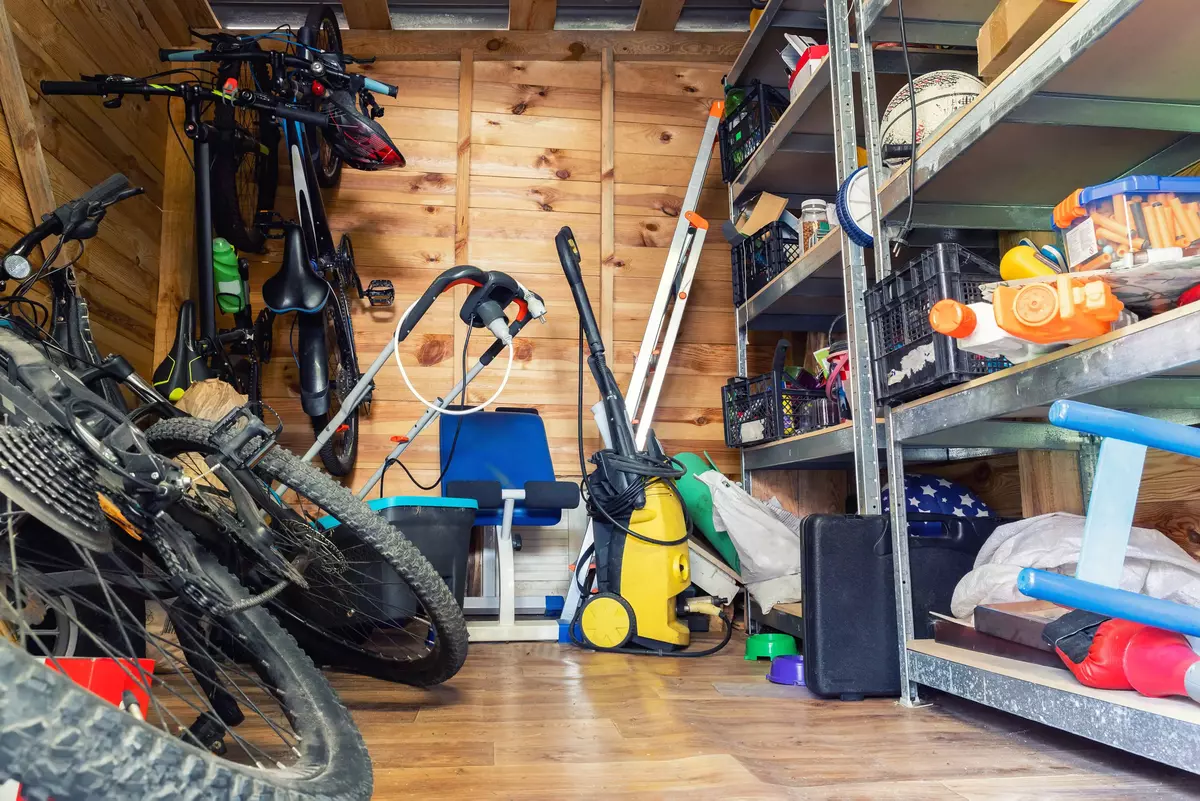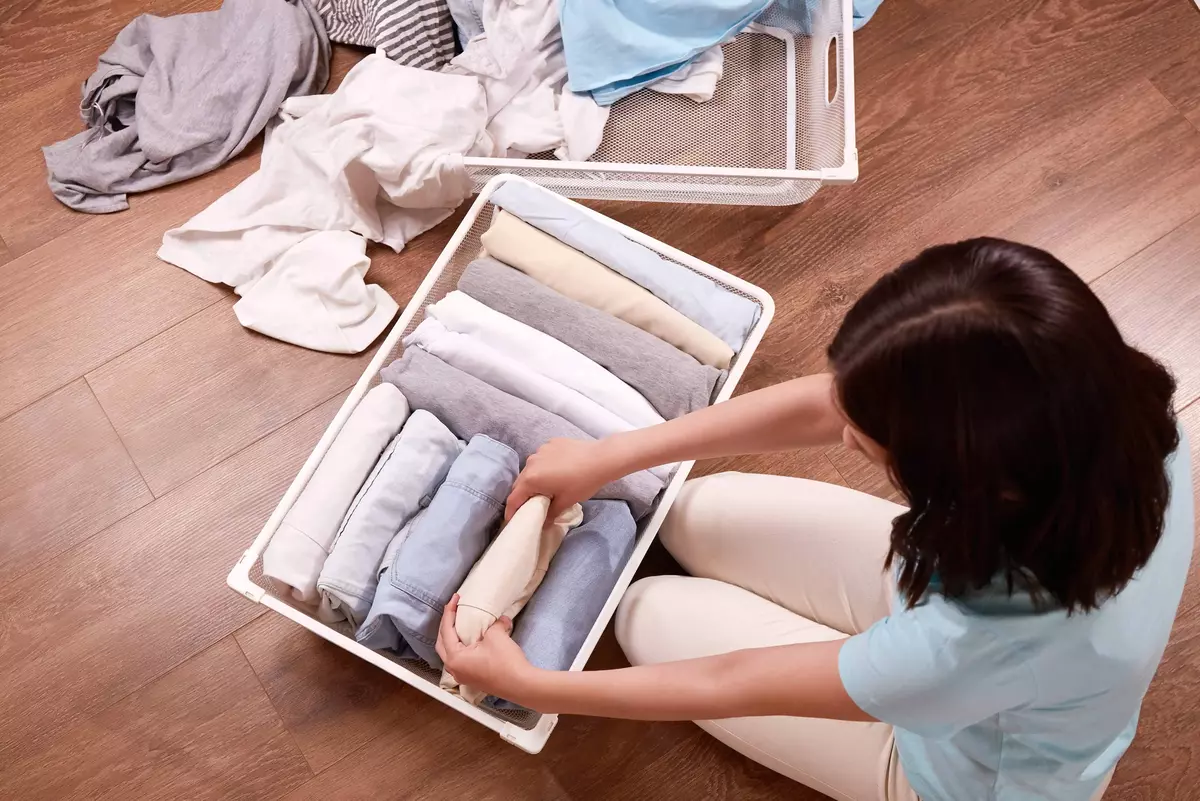How To Declutter Your Home Fast, Easily & Without Stressing
How to declutter your house
Our easy-to-follow guide to decluttering when you’re overwhelmed
Now, what business does a skip bin provider have telling you how to declutter your home? We can help you get rid of your hard rubbish, no doubt, but what expertise do we have with the actual organizing?
Well, as you can imagine, our job brings us into contact with all kinds of cleaning professionals for all kinds of spaces, residential and commercial included. We’ve learned quite a bit from them. We’re also parents, couples, renters, homeowners and, we have to admit, we can be pretty messy. Life happens! Clothes get washed but not put away, paper bags get stuffed around the fridge, chipped mugs and bowls get saved instead of thrown…
Decluttering can be overwhelming, but we’ve figured it out. Here’s what we’re going to cover:
- Set your goals and plan
- Decluttering methods
- Decluttering timelines (including one-day and one-month cleaning schedules)
- Decluttering, room by room
- Tips, tricks and more advice

1. Set your goals and plan
What we’re working on here is the foundation. Getting your goals, plans and schedules in order is 90% of the mental work done. The more time you spend getting these right, the less overwhelming the entire decluttering project is going to be for you.
Setting goals
- Define your objectives: Determine what you want to achieve in each room. Be specific about your goals. For example, you might aim to create more storage space in the kitchen or make the living room more inviting.
- Prioritise areas: Identify high-impact areas that will make the biggest difference. Typically, these include the living room, kitchen, and bedroom. Tackling these spaces first can provide a sense of accomplishment and motivation to continue.
- Visualise the end result: Picture how you want each room to look and feel once it’s decluttered. This mental image will serve as a motivation booster and help you stay focused on your goals.
Creating a plan
- Break it down: Divide the decluttering process into manageable tasks. This makes the overall project more manageable. Create a list of specific tasks for each room, such as “organise pantry shelves” or “sort through the wardrobe.”
- Set a timeline: Establish a realistic timeline for completing each task. Use a calendar to map out your plan, assigning specific days for each task. This helps ensure that you stay on track and make steady progress.
- Start small: Start with one drawer, shelf, or small space at a time. This will prevent you from feeling overwhelmed and make it easier to see quick wins, which can boost your motivation.
- Gather necessary tools: Having the right tools on hand can streamline the decluttering process. Essential items include:
- Label makers
- Markers and pens
- Tape
- Scissors
- Garbage bags
- Storage boxes
- Storage solutions: Consider investing in additional storage options like drawer dividers, shelf organisers, storage bins, baskets, shelves, and under-bed storage to maximise space.
Scheduling
- Set specific times: Dedicate specific times for decluttering sessions. This could be a few hours on the weekends or 30 minutes each day. Even consistently taking a few minutes every day for small tasks (clearing all the clutter from a bedside drawer, for instance) will help you make steady progress.
- Stick to the schedule: Treat your decluttering sessions like appointments. Avoid rescheduling or skipping them to ensure you stay on track.
- Involve family and friends: If you live with others, involve them in the process. Assign tasks to family members to distribute the workload and make the process faster and more efficient. If you’ve got a big task coming up, ask a friend or two for help and reward them with a meal! Who turns down free food?
2. Decluttering methods
It takes literally superhuman willpower to throw away a crusty, stained, broken, unusable thing if you also happen to love it. That’s why the internet is itself cluttered with different philosophies to explain what you should keep or throw away. Here are our four favourite decluttering methods. We like them because they’re easy to understand and easier to actually use.
1. The four-box method
The four-box method is a simple yet effective way to sort through your belongings. Using this method helps you quickly decide the fate of each item and keeps you organised throughout the decluttering process. Grab four boxes and label them as follows:
- Keep: Place items you use regularly and love in this box. These are things that are essential or bring you joy.
- Donate: Items that are in good condition but no longer needed go here. These can be donated to charity or given to someone who can use them.
- Trash: Anything that is broken, damaged, or unusable should be placed in this box. Ensure you dispose of these items responsibly.
- Relocate: Sometimes, items end up in the wrong room. Place things that belong in a different part of the house in this box and return them to their proper place later.
2. The 80/20 Rule
The 80/20 rule, also known as the Pareto Principle, suggests that we use 20% of our items 80% of the time. By focusing on the most important items, you can significantly reduce clutter and make your space more functional. Apply this rule by:
- Identifying the 20%: Determine which items you use most frequently and find most valuable.
- Eliminating the rest: Let go of the remaining 80% that you rarely use. This can include clothes you seldom wear, kitchen gadgets you never touch, or books you’ve already read.
3. The KonMari method
The KonMari Method, developed by Marie Kondo, is all about joy and mindfulness. This method encourages you to surround yourself only with items that bring you happiness, leading to a more joyful living environment. Here’s how to use it:
- Spark joy: Hold each item and ask yourself if it sparks joy. If it does, keep it. If not, it’s time to let it go.
- Thank items: When you decide to discard something, thank it for its service and the role it played in your life. This helps create a positive mindset and respect for your belongings.
4. The minimalist approach
The minimalist approach focuses on simplicity and functionality. Here’s how to implement it:
- Evaluate necessity: Ask yourself if each item is truly necessary and valuable in your life. Consider its purpose and how often you use it.
- Keep essentials: Retain only the items that are essential to your daily living and contribute positively to your life. This might include versatile clothing, functional furniture, and tools you use regularly.
Eliminate excess: Remove anything that doesn’t serve a purpose or add value. This could mean getting rid of duplicates, items that are only kept “just in case,” and things that don’t fit your lifestyle anymore.

3. Decluttering timelines
Decluttering (like reading this blog) is a time-intensive process. But we don’t know a single person who isn’t strapped for time. Some people just want to do the most they can in the one day they can spare, others want to do a little every day and get their decluttering done over a month. Whichever way you want to go, here’s how you could plan your timeline:
How to declutter your house in one day
If you’re short on time but need to make a significant impact, a one-day declutter can be incredibly effective. This approach focuses on high-impact areas and uses quick decision-making techniques to clear clutter fast.
Prioritise high-impact areas
- Living room: This is often the most used room and the first area guests see. Start here to create an immediate sense of accomplishment.
- Kitchen: A tidy kitchen can make daily tasks more efficient and enjoyable. Clear countertops and organise cabinets.
- Bedroom: A clutter-free bedroom can enhance relaxation and sleep quality. Focus on clearing surfaces and organising closets.
Set a timer
- Allocate a specific amount of time for each room to keep yourself on track and maintain a sense of urgency. For example, spend one hour on the living room, two hours on the kitchen, and one hour on the bedroom.
- Use a timer to break down tasks into manageable chunks. Work for 25 minutes, then take a 5-minute break. Repeat this cycle to stay focused and avoid burnout.
Use the four-box method
- Keep: Items you use regularly and love.
- Donate: Items in good condition that you no longer need.
- Trash: Broken or unusable items.
- Relocate: Items that belong in a different room.
This method helps you make quick decisions and prevents you from getting bogged down in sentimentality.
Get help
- Enlist family members or friends to speed up the process. Assign specific tasks or rooms to each person to cover more ground quickly.
- Make it fun by playing music, setting challenges, or turning it into a game. For example, see who can fill their donation box the fastest.
How to declutter your home in 30 days
A 30-day declutter is perfect for those who prefer a more gradual and thorough approach. This timeline allows you to focus on one area at a time, ensuring a comprehensive decluttering process.
Assign specific tasks
- Daily focus: Assign one specific area or task per day. For example:
- Day 1: kitchen counters
- Day 2: bedroom closet
- Day 3: bathroom cabinets
- Weekly themes: Group similar tasks together. For example:
- Week 1: kitchen
- Week 2: bedroom
- Week 3: living areas
- Week 4: storage spaces
Use weekends for larger projects
- Allocate weekends for tackling bigger areas like the garage, basement, or attic. These spaces often require more time and effort due to their size and the nature of the items stored there.
- Break these larger projects into smaller tasks. For example:
- Saturday morning: sort through tools
- Saturday afternoon: organise seasonal decorations
- Sunday: clean and rearrange storage bins.
Take breaks and reward yourself
- Regular breaks are essential to prevent fatigue and maintain motivation. Schedule short breaks every hour and a longer break for lunch or a quick walk.
- Reward yourself for completing tasks. Treat yourself to a favourite snack, a relaxing activity, or some downtime with a good book or movie.
Tips for both timelines
Stay motivated
- Visual reminders: Keep photos or drawings of your end goals visible to remind yourself of what you’re working towards.
- Accountability: Share your goals with a friend or family member who can check in on your progress and offer encouragement.
Keep it fun
- Music and entertainment: Play your favourite music, listen to podcasts, or watch TV shows while you work to make the process more enjoyable.
- Involve others: Declutter with a friend or family member to make it a social activity. Share tips and motivate each other.
Book a skip bin!
By choosing the timeline that best suits your schedule and needs, you can effectively declutter your home, creating a more organised and stress-free environment. Whether you opt for a quick one-day overhaul or a detailed 30-day journey, the key is to stay focused, keep it fun, and celebrate your progress along the way.

4. Declutter with a room-by-room approach
Taking a room-by-room approach ensures that you systematically declutter your entire home, making the process more manageable and thorough. Here's how to tackle each area effectively:
Living room
The living room is the heart of the home. And, like your actual heart, letting it get cluttered is an absolute disaster. Here’s how you declutter your living room:
- Remove unnecessary items: Go through your living room and identify items you no longer need, such as old magazines, unused decor, and outdated electronics. Place these items in the appropriate boxes (Keep, Donate, Trash, Relocate).
- Organise books and media: Arrange books, magazines, DVDs, and other media neatly on shelves. Consider donating books or media you no longer enjoy or use.
- Clear surfaces: Keep coffee tables, side tables, and mantels clear of clutter (we like to use decorative boxes or baskets to store items like remote controls and coasters).
- Use storage solutions: Utilise storage options like baskets, bins, and shelving units to keep items organised and out of sight.
Kitchen
The kitchen is another high-traffic area that can easily become cluttered. Apart from creating a potential fire or tripping hazard, kitchen clutter makes cooking a pain in the neck. We don’t know about you, but we love cooking. What a shame! Here’s how to declutter your kitchen:
- Sort pantry items: Go through your pantry and dispose of expired goods. Organise remaining items by category (e.g., canned goods, snacks, baking supplies) and use clear containers to keep things tidy.
- Organise cabinets and drawers: Arrange your kitchen cabinets and drawers so that frequently used items are easily accessible. Consider using drawer dividers and shelf organisers to maximise space.
- Minimise countertop clutter: Store appliances and utensils that you don’t use daily in cabinets or drawers. Keep countertops clear to create a clean and open space.
- Regular cleaning: Implement a regular cleaning schedule to maintain an organised and hygienic kitchen. Wipe down surfaces and clean out the fridge regularly.
Bedroom
Nobody wants to sleep in a pigsty. But piles of laundry, unread books and the clutter that comes with turning your bedroom into your home office can ruin what should be your sanctum. Here’s how to declutter your bedroom:
- Clear under-bed storage: Remove items stored under the bed and decide what to keep, donate, or discard. Use storage bins to neatly store items you decide to keep.
- Organise closets and drawers: Sort through your clothes and accessories, keeping only what you wear regularly. Donate or discard items you no longer need. Use dividers and storage boxes to keep everything organised.
- Donate unworn clothes: Regularly go through your wardrobe and donate clothes, shoes, and accessories that you no longer wear or need.
- Create a serene environment: Keep your bedroom clutter-free by regularly tidying up and removing any unnecessary items. This will help create a peaceful atmosphere conducive to rest and relaxation.
Bathroom
Bathrooms can quickly become cluttered with toiletries and beauty products. An organised bathroom is easier to clean and more pleasant to use.
- Dispose of expired products: Go through your medicine cabinet and dispose of expired medications, beauty products, and toiletries.
- Organise toiletries: Use baskets, bins, and shelves to keep toiletries and cleaning supplies organised. Consider using clear containers to see what you have easily.
- Keep surfaces clear: Store items in cabinets or drawers to maintain tidy countertops. Use drawer organisers to keep things neat and easily accessible.
- Regular cleaning: Implement a cleaning schedule to keep your bathroom clean and organised. Wipe down surfaces regularly and clean fixtures.
Home office
An organised home office can boost productivity and make working from home more efficient.
- Organise paperwork: Use a filing system to keep important documents organised and easily accessible. Shred or recycle paperwork you no longer need.
- Declutter the desk: Remove unnecessary items from your desk and keep only what you need for daily tasks. Use desk organisers to keep supplies in order.
- Create a functional workspace: Ensure your workspace is functional and comfortable. Use storage solutions like filing cabinets and shelves to keep everything organised.
- Maintenance schedule: Regularly tidy up your office to maintain an organised and efficient workspace. Schedule time each week to go through paperwork and clear your desk.
Children’s room
Oh, boy. We’ve got parents of under-5s on our team, so we know first-hand that a clean room doesn’t stay that way for long… Here’s how you can declutter and organise your kid’s bedroom.
- Sort toys and clothes: Regularly go through toys, clothes, and books to remove items that are no longer used or outgrown. Donate or pass down items in good condition.
- Organise storage solutions: Use storage bins, shelves, and baskets to keep toys, clothes, and books organised. Label storage containers to make it easy for children to find and put away their belongings.
- Involve children: Teach children to declutter and organise their space. Make it a fun activity by setting a timer and turning it into a game.
- Rotate toys and books: To keep the room fresh and engaging, rotate toys and books regularly. Store away some items and bring them out later to keep things interesting.
Garage
This is usually one of the harder spaces to organise. The garage seems to be the one room in the house where more stuff is always allowed to accumulate without it being too much of a bother. Still, decluttering your garage will free up so much valuable storage space. Here’s how to declutter your garage.
- Dispose of unused items: Go through items stored in the garage and dispose of or donate anything you no longer need. Be ruthless in your decluttering to free up space.
- Organise tools and equipment: Store tools and equipment on shelves, bins, and hooks. Group similar items together and label storage containers for easy access.
- Maximise space: Use storage solutions to make the most of available space. Consider installing overhead storage racks or wall-mounted shelves.
- Regular cleanouts: Schedule regular cleanouts to prevent clutter from accumulating. Make it a habit to go through stored items at least once a year.
Closets
Closets can quickly become cluttered if not regularly maintained. Keeping them organised can make finding what you need easier.
- Clear out unused items: Regularly go through your closets and remove items you no longer need or use. Donate or discard items in good condition.
- Use storage solutions: Maximise space by using bins, shelves, and dividers. Organise items by category and frequency of use.
- Seasonal rotation: Rotate clothing and accessories based on the season. Store off-season items in bins or garment bags to free up space.
- Regular decluttering: Maintain an orderly closet by regularly sorting through your belongings. Make it a habit to declutter your closet every few months.
Laundry
The laundry room can often become cluttered with clothes, detergents, and cleaning supplies. Keeping this area organised can make laundry tasks more efficient and less stressful.
- Sort laundry supplies: Go through your laundry detergents, fabric softeners, and cleaning supplies. Dispose of empty containers and consolidate partially used products.
- Organise cleaning tools: Use hooks, shelves, or bins to neatly store cleaning tools like mops, brooms, and dustpans. Label storage containers to make it easy to find what you need.
- Create a laundry schedule: Establish a regular laundry schedule to prevent piles of clothes from accumulating. Designate specific days for washing, drying, folding, and putting away laundry.
- Maximise space: Use vertical storage solutions like shelves and wall-mounted racks to maximise space. Consider adding a folding station or a rolling cart for additional storage and workspace. We like to have one laundry basket for dirty clothes and a separate one for clean clothes — it essentially becomes a portable storage unit to keep clothes we don’t have time to fold and put away.
By following these detailed steps for each room, you can effectively declutter your home and create a more organised and inviting living space. Remember to take it one step at a time, and don't hesitate to ask for help if needed. Happy decluttering!

5. More decluttering tips and tricks
Effective decluttering involves more than just sorting through your belongings. Here are 20 tips and tricks to help you streamline the process, stay motivated, and maintain a clutter-free home.
Avoid common mistakes
- Set realistic goals: Don’t aim to declutter your entire house in one day. Break the task into smaller, manageable goals.
- Avoid emotional attachments: It’s easy to get sentimental about items. Focus on their usefulness and joy rather than the memories attached to them.
- Don’t tackle everything at once: Take it one room or area at a time to avoid feeling overwhelmed.
Emotional aspects
- Deal with sentimental items: Take photos of sentimental items before discarding them to preserve the memory without keeping the physical item.
- Create memory boxes: Store a few cherished items in a designated box to keep memories without cluttering your living space.
- Practice gratitude: Thank items for their service before letting them go, as recommended by the KonMari Method.
Practical tips
- Use a sorting system: Sort items into categories like keep, donate, trash, and relocate to stay organised.
- Label storage containers: Clearly label boxes and bins to make it easy to find and organise items.
- Maintain regular habits: Incorporate daily or weekly decluttering tasks into your routine to prevent clutter build-up.
- Create designated spaces: Assign specific places for items to ensure everything has a home.
- Use vertical storage: Maximise space by using wall-mounted shelves, hooks, and racks.
- Rotate seasonal items: Store off-season items away and rotate them as needed to keep your space tidy.
Creating a habit
- Integrate small daily tasks: Spend 10-15 minutes each day decluttering a small area to make it a habit.
- Set decluttering goals: Write down your goals and track your progress to stay motivated.
- Involve family members: Make decluttering a family activity to distribute the workload and teach good habits.
Organisation strategies
- Use drawer dividers: Keep drawers neat and organised with dividers for different categories of items.
- Utilise under-bed storage: Store items like extra bedding and seasonal clothing under the bed to free up closet space.
- Implement a one-in, one-out rule: For every new item you bring into your home, remove one to maintain balance.
- Keep flat surfaces clear: Avoid piling items on countertops, tables, and desks to maintain a tidy appearance.
- Regularly reassess your belongings: Periodically go through your items to ensure you’re not accumulating unnecessary clutter.
Bonus tips
- Create a drop zone: Designate an area near the entrance for keys, mail, and other items to keep them from cluttering other spaces.
- Use clear containers: Transparent bins and boxes make it easy to see what’s inside, reducing the need to dig through clutter.
- Repurpose items: Find new uses for items you’re considering discarding to reduce waste and save money.
- Donate regularly: Set a schedule to donate items you no longer need, ensuring they find a new home promptly.
- Stay consistent: Consistency is key to maintaining a clutter-free home. Stick to your decluttering routine to prevent future build-up.
Ready to start decluttering and save more space? Let WM Waste help!
Well! That was a heck of a long read, but we hope we made it worth your while! Now that you know everything you need to know, it’s time to start planning and scheduling your decluttering! Don’t forget to book your hard rubbish collection!
Why use WM Waste?
Because we’re:
- Eco-friendly: WM Waste is committed to environmentally responsible waste disposal. We focus on recycling and reusing items to minimise landfill waste and promote sustainability.
- Convenient: With options like same-day collection and easy online booking, we ensure a hassle-free and efficient experience for their customers.
- Experts: With years of experience in the waste management industry, we have the knowledge and expertise to handle all types of waste efficiently and safely.





